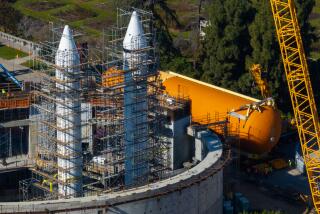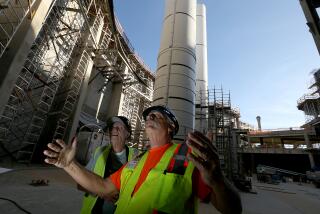Astronauts Install Solar Wings Onto Space Station
- Share via
KENNEDY SPACE CENTER, Fla. — Space shuttle Endeavour’s astronauts attached the world’s largest, most powerful set of solar panels to the international space station Sunday, then watched with delight and relief as the first glittering wing unfurled.
The panel extended to its full length but didn’t appear to be taut, prompting NASA to put off extending the second wing until today at the earliest.
The astronauts’ task is as monumental as the wings themselves: The future of space station construction hinges on their ability to install the $600-million solar panels, which will provide much-needed power to the newly inhabited outpost.
Spacewalkers Joe Tanner and Carlos Noriega bolted the wings to the space station Sunday afternoon, and about five hours later, shuttle skipper Brent Jett Jr. was able to command the right wing to open.
“Ah, it looks beautiful,” Noriega exclaimed as the wing finally opened after a delay caused by a computer software problem.
“More power to the station,” said Tanner.
It took less than 14 minutes for the first folded wing to spread to its full 115 feet, and it soon began generating electricity. Some of its tension cables appeared to be slack, however, a problem that had flight controllers debating how best to proceed. Engineers worried that part of the panel may not have extended into a taut, locked position.
A computer software problem initially left Jett unable to command the latches and retention pins on the wings to open so the panels could unfurl. New software was sent up, and Jett was able to open all the latches and pins except one on the left wing. He continued to send commands and eventually freed the stuck pin.
The blue and gold-colored wings, made of silicone cells and thin Kapton layers, had been folded like an accordion for Thursday’s launch aboard Endeavour.
Each wing is 38 feet wide and covered with 32,800 solar cells.
More to Read
Sign up for Essential California
The most important California stories and recommendations in your inbox every morning.
You may occasionally receive promotional content from the Los Angeles Times.










